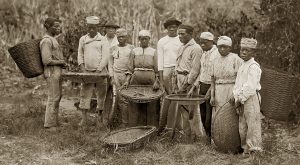Thursday, April 26th author of Black behind the ears, Ginetta Candelario, lectured a presentation titled 100 Years of Dominican Feminism. Candelario’s main point was to elaborate on the specific cases of Dominican feminists. The talk was featured as a part of the University of Scranton’s week-long campaign to confront sexual violence on campus. In the spirit of the campaign designed to empower women, this presentation focused on historical women of the Dominican that were involved in social activism within their country.
Ginetta Candelario’s lecture consisted of an illustrated PowerPoint presentation in which she thoroughly elaborated on specific slides. Following the lecture, Candelario accepted questions from the audience. Beginning with a few positive remarks, I immediately noticed Candelario’s excellent public speaking skills. It was obvious that she knew her presentation well and merely used her PowerPoint to facilitate the lecture and not dominate it. Candelario also consistently made eye contact with the audience which I felt was important throughout her presentation. Finally, I enjoyed Candelario’s personal stories relating to her research into Dominican feminism. The story of thumbing through stacks of articles in the library searching for a specific letter and/or newspaper clipping clearly demonstrated the depth and concentration of her research. Her other story about the town square in the capital where women shaved their head in public as an activist demonstration was empowering.
There were a few things that I did not like about the lecture. I felt that Candelario spent too much time on the finer details. I understand that the who, what, where, and how are important questions to consider whenever addressing historical figures but for a short lecture I felt that Candelario weakened her presentation by including too much context information. For example, I did not think it was worth including extraneous personal information on character’s spouses or significant others just to arrive at the origin of the word feminism in the Dominican Republic. Another critique, as insignificant as it is, was the length of the lecture. As a presenter, you need to be aware of the time remaining and not run late. Although it was mostly due to the audience’s questions, Candelario’s lecture ran over the expected time. Nevertheless, I thoroughly enjoyed Candelario’s presentation and look forward to finishing reading her book Black behind the ears.
Lastly, our most recent theme in Race in Latin America was race and nation in the Dominican Republic. First, Candelario’s book is an excellent parallel to the course unit because it addresses that race and nationality can be dynamic despite being grouped together. One can be both light and dark skinned and be Dominican but both reject African descent. Her lecture, on the other hand, offers examples of women who find Dominican nationality through feminism giving a different picture to the theme of race and nation.



